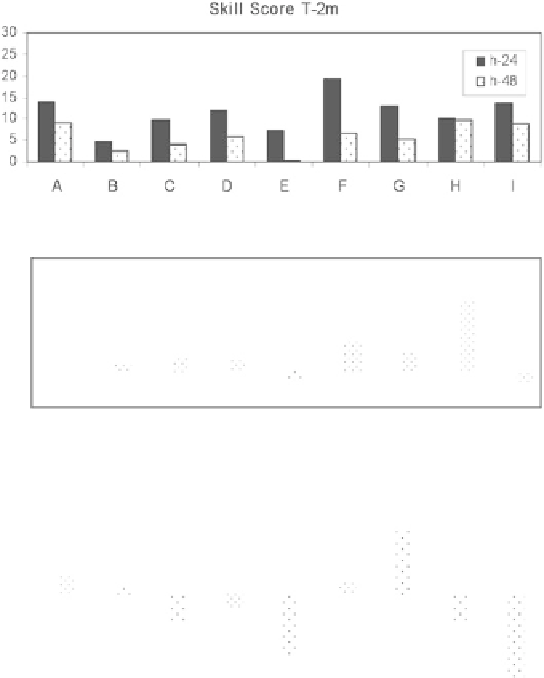Geoscience Reference
In-Depth Information
a
b
Skill Score Wind Speed at 10-m
30
20
10
0
-10
ABCDEF
GH I
c
Skill Score Precip
100
80
60
40
20
0
-20
-40
-60
-80
-100
ABCDEFG
HI
Fig. 25.16
Mean square error skill scores (
SS
) for 2-m temperature (
a
), 10-m wind speed (
b
)and
24 h accumulated precipitation (
c
). Results are plotted for averaged 24- and 48-h forecasts as a
function of defined locations (Updated from
Xu et al.
(
2009
))
error. Satellite data assimilation, at least for the AMSU-A and AMSU-B radiances,
seems not to make a significant contribution to the accuracy of surface temperature
forecasts in the higher mountain areas.
In contrast, the 10-m wind speed in Fig.
25.16
b shows a reverse SS value from
the surface temperature. Six of nine locations including all high mountain areas
(B, D, E) show a negative skill score, which means the satellite data assimilation
produced a negative impact, but the SS in the Arabian Sea increases by 25 % and
20 % for 24- and 48-h forecasts, respectively. For the precipitation forecasts, the
results suggest (Fig.
25.16
c) that the satellite data assimilation only has a positive
impacts on improvement of forecast biases over Iraq (A), North of Iran (B) and
Saudi Arabia desert (F, G). The other five sub-regions become worse.




























































Search WWH ::

Custom Search